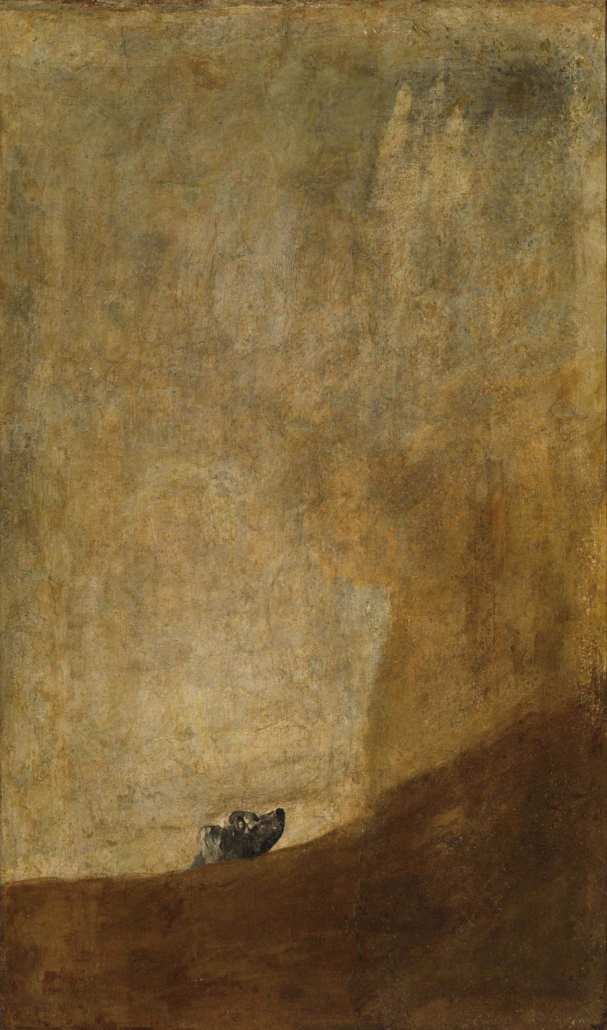Named after my favourite yoga position, this is one of the most viscerally arresting paintings I know, where so little seems to say so much. It is one of the ‘Black Paintings’ made on the walls of Goya’s Quinta del Sordo, just outside Madrid. Uncommissioned, and apparently not designed for public display, they are bleak, sinister, and show humanity as grim, grotesque and barbaric. The heavy colouring here thuds with dull pain. There’s melting, even levitating in the chromaticism of the paint, which seems to anticipate Rothko’s spiritual colour blocks by a good hundred years. We’ll all see different stories here, but the ‘ground’ seems to me to have a steep upward slope, and the dog, all pathos, gazes up into who knows what. The painting’s power lies in suggestion, and in its openness. Is the dog drowning, paralysed with fear, or about to be overwhelmed by some other force? Perhaps it is hoping for divine intervention from the vast gloom of sky, though that might be far-fetched (get it?!). Either way, we might know how he feels: facing his own uphill struggle, barely keeping his head above water, fighting to resist the rising tide of oblivion. Goya – by this time aged, deaf, disillusioned with the world – looks into hell (what Hobbes called “truth seen too late”) and paints a vision of quiet terror. What he knew then still holds: art isn’t an extra or a bonus. It’s about all we can’t see, feel, or bear, as well as what we can. It’s about emergency exits, connections, swimming against the flow, survival, and it’s about how long we have left together.

 Summertime – Edward Hopper
Summertime – Edward Hopper